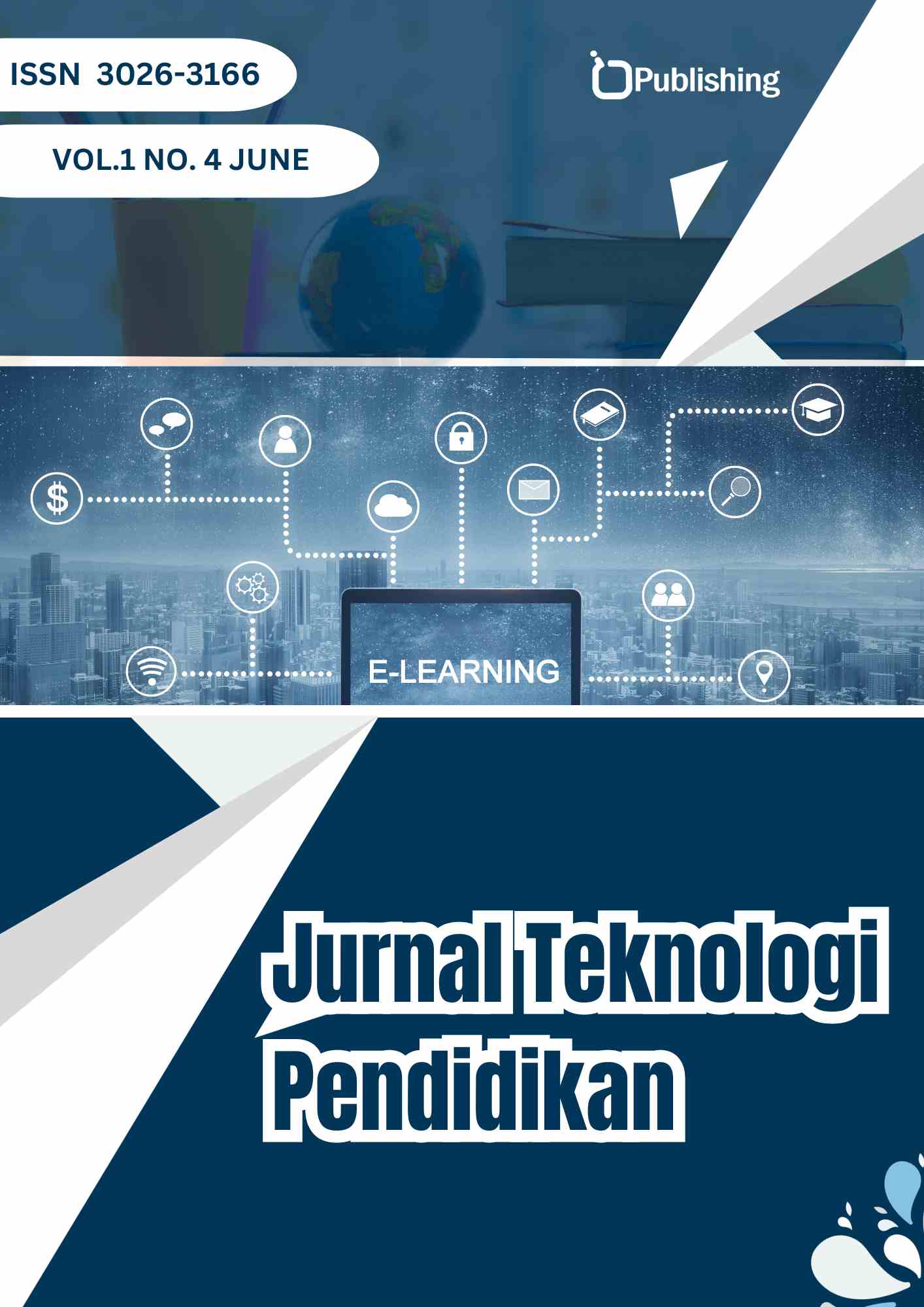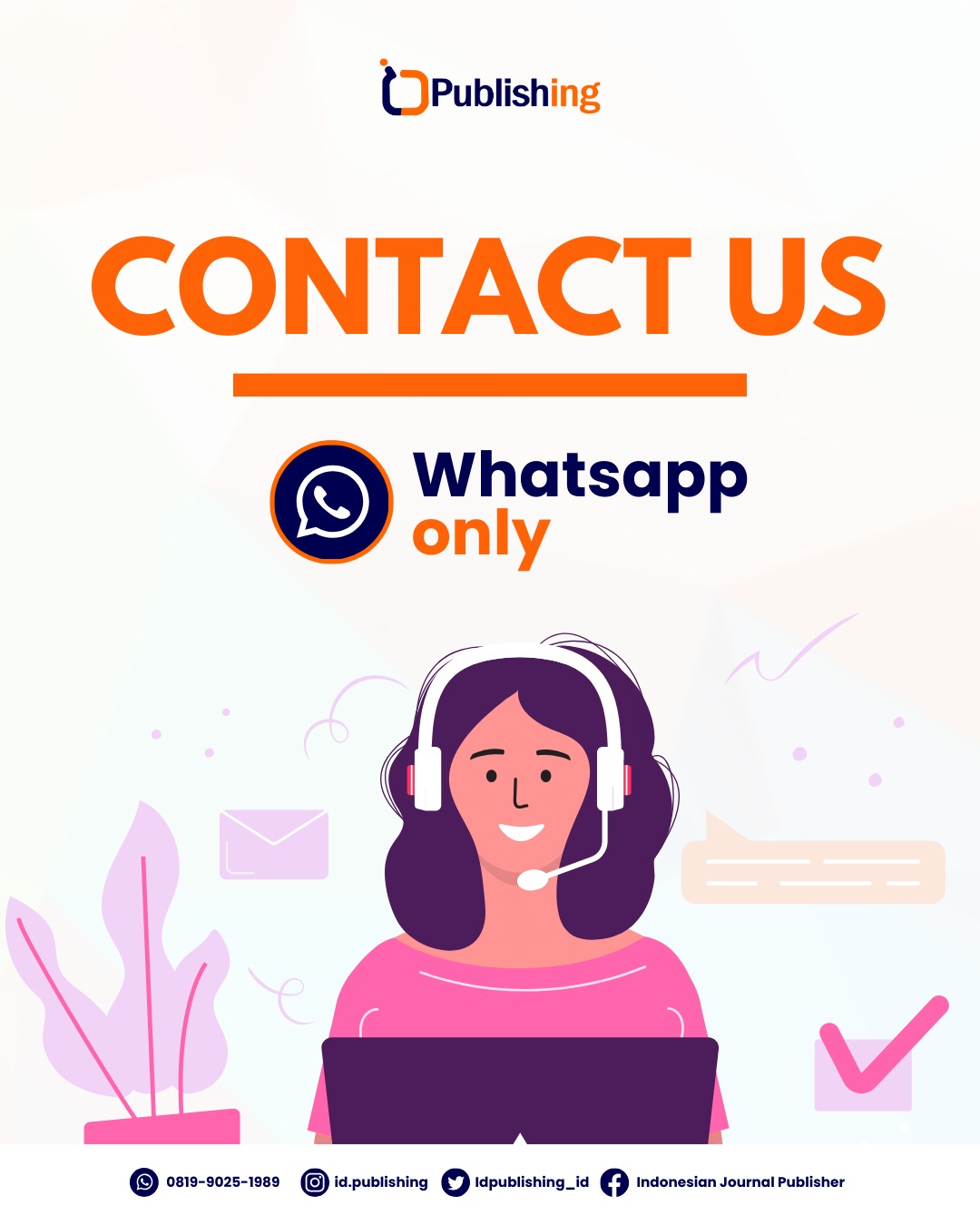Trends and Research Issues of Augmented Reality in Education: A Bibliometric Study
DOI:
https://doi.org/10.47134/jtp.v1i4.907Keywords:
Augmented Reality, Bibliometric, EducationAbstract
This study aims to comprehensively review Augmented Reality (AR) research in education through a bibliometric analysis of 1,850 journal articles and proceedings published between 2015 and 2023. Data were obtained from the Scopus database, which focused on social science subjects. This study focuses on two main aspects: performance analysis and science mapping. The results show a consistent upward trend in AR research, with the United States leading the number of publications, followed by China, Spain, Taiwan, and Turkey. The most influential authors are Akçayır, M. and Akçayır, G., with the highest number of citations. Visualization using VOSviewer yielded seven research clusters, highlighting the role of AR and VR in interactive teaching, simulation, and engineering education. The findings also suggest further research opportunities in the areas of "nursing education," "simulation," and "educational innovation," affirming AR's potential for innovative and sustainable learning. This research contributes to the understanding of the development of AR in education and serves as a useful reference for other researchers interested in studying AR in education.
References
Abad Segura, E. (2021). Digital education and circular economy in university contexts: a systematic review. Teaching in social sciences: learning centred in the student with ICTS.-(Collection Innovation in Social Sciences), 73-86. DOI: https://doi.org/10.2307/j.ctv20hcv1n.9
AlGerafi, M. A., Zhou, Y., Oubibi, M., & Wijaya, T. T. (2023). Unlocking the potential: A comprehensive evaluation of augmented reality and virtual reality in education. Electronics, 12(18), 3953. DOI: https://doi.org/10.3390/electronics12183953
Arena, F., Collotta, M., Pau, G., & Termine, F. (2022). An overview of augmented reality. Computers, 11(2), 28. DOI: https://doi.org/10.3390/computers11020028
Arisandi, D., Setiawan, D., Karpen, K., & Musyafak, M. (2022). Perancangan Media Pembelajaran Topologi Jaringan dengan Augmented Reality di Program Studi Teknik Informatika. Edukatif: Jurnal Ilmu Pendidikan, 4(1), 1487-1497. DOI: https://doi.org/10.31004/edukatif.v4i1.2231
Asitah, N., Murni, A. W., Lestari, W. M., Aini, N., Baalwi, M. A., Kurniawati, R., ... & Wardono, M. S. (2023). Educational Innovation Using Augmented Reality: Systematic Literature Review. In International Conference on Intelligent Systems and Sustainable Computing (pp. 71-80). Springer, Singapore. DOI: https://doi.org/10.1007/978-981-99-4717-1_7
Baas, J., Schotten, M., Plume, A., Côté, G., & Karimi, R. (2020). Scopus as a curated, high-quality bibliometric data source for academic research in quantitative science studies. Quantitative science studies, 1(1), 377-386. DOI: https://doi.org/10.1162/qss_a_00019
Balakrishnan, S., Hameed, M. S. S., Venkatesan, K., & Aswin, G. (2021, March). Interaction of spatial computing in augmented reality. In 2021 7th International Conference on Advanced Computing and Communication Systems (ICACCS) (Vol. 1, pp. 1900-1904). IEEE. DOI: https://doi.org/10.1109/ICACCS51430.2021.9442010
Baragash, R. S., Al-Samarraie, H., Alzahrani, A. I., & Alfarraj, O. (2020). Augmented reality in special education: A meta-analysis of single-subject design studies. European Journal of Special Needs Education, 35(3), 382-397. DOI: https://doi.org/10.1080/08856257.2019.1703548
Bozzelli, G., Raia, A., Ricciardi, S., De Nino, M., Barile, N., Perrella, M., ... & Palombini, A. (2019). An integrated VR/AR framework for user-centric interactive experience of cultural heritage: The ArkaeVision project. Digital Applications in Archaeology and Cultural Heritage, 15, e00124. DOI: https://doi.org/10.1016/j.daach.2019.e00124
Chang, S. C., & Hwang, G. J. (2018). Impacts of an augmented reality-based flipped learning guiding approach on students’ scientific project performance and perceptions. Computers & Education, 125, 226-239. DOI: https://doi.org/10.1016/j.compedu.2018.06.007
Cheng, K. H., & Tsai, C. C. (2019). A case study of immersive virtual field trips in an elementary classroom: Students’ learning experience and teacher-student interaction behaviors. Computers & Education, 140, 103600. DOI: https://doi.org/10.1016/j.compedu.2019.103600
Craig, A. B. (2013). Understanding augmented reality: Concepts and applications. Amsterdam: Morgan Kaufmann. DOI: https://doi.org/10.1016/B978-0-240-82408-6.00002-3
Donthu, N., Kumar, S., Mukherjee, D., Pandey, N., & Lim, W. M. (2021). How to conduct a bibliometric analysis: An overview and guidelines. Journal of business research, 133, 285-296. DOI: https://doi.org/10.1016/j.jbusres.2021.04.070
Dwivedi, Y. K., Hughes, L., Baabdullah, A. M., Ribeiro-Navarrete, S., Giannakis, M., Al-Debei, M. M., ... & Wamba, S. F. (2022). Metaverse beyond the hype: Multidisciplinary perspectives on emerging challenges, opportunities, and agenda for research, practice and policy. International journal of information management, 66, 102542. DOI: https://doi.org/10.1016/j.ijinfomgt.2022.102542
Fatimah, S., Setiawan, W., Junaeti, E., & Surur, A. S. (2019). Development of Smart Content Model-Based Augmented Reality to Support Smart Learning. Journal of Science Learning, 2(2), 65-70. DOI: https://doi.org/10.17509/jsl.v2i2.16204
Fombona-Pascual, A., Fombona, J., & Vicente, R. (2022). Augmented reality, a review of a way to represent and manipulate 3D chemical structures. Journal of chemical information and modeling, 62(8), 1863-1872. DOI: https://doi.org/10.1021/acs.jcim.1c01255
Pranckutė, R. (2021). Web of Science (WoS) and Scopus: The titans of bibliographic information in today’s academic world. Publications, 9(1), 1-59.
González, N. A. A. (2018). Development of spatial skills with virtual reality and augmented reality. International Journal on Interactive Design and Manufacturing (IJIDeM), 12, 133-144. DOI: https://doi.org/10.1007/s12008-017-0388-x
Huang, T. C., Chen, C. C., & Chou, Y. W. (2016). Animating eco-education: To see, feel, and discover in an augmented reality-based experiential learning environment. Computers & Education, 96, 72-82. DOI: https://doi.org/10.1016/j.compedu.2016.02.008
Hutahaean, H. D., Rahman, S. M. A., & Mendoza, M. D. (2022, February). Development of interactive learning media in computer network using augmented reality technology. In Journal of Physics: Conference Series (Vol. 2193, No. 1, p. 012072). IOP Publishing. DOI: https://doi.org/10.1088/1742-6596/2193/1/012072
Ibáñez, M. B., & Delgado-Kloos, C. (2018). Augmented reality for STEM learning: A systematic review. Computers & Education, 123, 109-123. DOI: https://doi.org/10.1016/j.compedu.2018.05.002
Ibáñez, M. B., Portillo, A. U., Cabada, R. Z., & Barrón, M. L. (2020). Impact of augmented reality technology on academic achievement and motivation of students from public and private Mexican schools. A case study in a middle-school geometry course. Computers & Education, 145, 103734. DOI: https://doi.org/10.1016/j.compedu.2019.103734
Jesionkowska, J., Wild, F., & Deval, Y. (2020). Active learning augmented reality for STEAM education—A case study. Education Sciences, 10(8), 198. DOI: https://doi.org/10.3390/educsci10080198
Karakus, M., Ersozlu, A., & Clark, A. C. (2019). Augmented Reality Research in Education: A Bibliometric Study. EURASIA Journal of Mathematics, Science and Technology Education, 15(10). DOI: https://doi.org/10.29333/ejmste/103904
Köse, H., & Güner-Yildiz, N. (2021). Augmented reality (AR) as a learning material in special needs education. Education and Information Technologies, 26(2), 1921-1936. DOI: https://doi.org/10.1007/s10639-020-10326-w
López Belmonte, J., Moreno-Guerrero, A. J., López Núñez, J. A., & Pozo Sánchez, S. (2019). Analysis of the productive, structural, and dynamic development of augmented reality in higher education research on the web of science. Applied Sciences, 9(24), 5306. DOI: https://doi.org/10.3390/app9245306
Martín-Gutiérrez, J., Fabiani, P., Benesova, W., Meneses, M. D., & Mora, C. E. (2015). Augmented reality to promote collaborative and autonomous learning in higher education. Computers in human behavior, 51, 752-761. DOI: https://doi.org/10.1016/j.chb.2014.11.093
Martín-Gutiérrez, J., Mora, C. E., Añorbe-Díaz, B., & González-Marrero, A. (2017). Virtual technologies trends in education. Eurasia journal of mathematics, science and technology education, 13(2), 469-486. DOI: https://doi.org/10.12973/eurasia.2017.00626a
Mukherjee, D., Lim, W. M., Kumar, S., & Donthu, N. (2022). Guidelines for advancing theory and practice through bibliometric research. Journal of Business Research, 148, 101-115. DOI: https://doi.org/10.1016/j.jbusres.2022.04.042
Mystakidis, S., Christopoulos, A., & Pellas, N. (2022). A systematic mapping review of augmented reality applications to support STEM learning in higher education. Education and Information Technologies, 27(2), 1883-1927. DOI: https://doi.org/10.1007/s10639-021-10682-1
Papanastasiou, G., Drigas, A., Skianis, C., Lytras, M., & Papanastasiou, E. (2019). Virtual and augmented reality effects on K-12, higher and tertiary education students’ twenty-first century skills. Virtual Reality, 23(4), 425-436. DOI: https://doi.org/10.1007/s10055-018-0363-2
Portman, M. E., Natapov, A., & Fisher-Gewirtzman, D. (2015). To go where no man has gone before: Virtual reality in architecture, landscape architecture and environmental planning. Computers, Environment and Urban Systems, 54, 376-384. DOI: https://doi.org/10.1016/j.compenvurbsys.2015.05.001
Potkonjak, V., Gardner, M., Callaghan, V., Mattila, P., Guetl, C., Petrović, V. M., & Jovanović, K. (2016). Virtual laboratories for education in science, technology, and engineering: A review. Computers & Education, 95, 309-327. DOI: https://doi.org/10.1016/j.compedu.2016.02.002
Pranckutė, R. (2021). Web of Science (WoS) and Scopus: The titans of bibliographic information in today’s academic world. Publications, 9(1), 1-59. DOI: https://doi.org/10.3390/publications9010012
Putri, C. R., Soleh, S. M., Saregar, A., Anugrah, A., & Susilowati, N. E. (2021, February). Bibliometric analysis: Augmented reality-based physics laboratory with VOSviewer software. In Journal of Physics: conference series (Vol. 1796, No. 1, p. 012056). IOP Publishing. DOI: https://doi.org/10.1088/1742-6596/1796/1/012056
Rullyana, G., Afriany, D., & Japar, M. (2024). A Bibliometric Analysis of Learning Organization (1976-2023). Kelola: Jurnal Manajemen Pendidikan, 11(1), 1-17. DOI: https://doi.org/10.24246/j.jk.2024.v11.i1.p1-17
Sirakaya, M., & Cakmak, E. K. (2018). The effect of augmented reality use on achievement, misconception and course engagement. Contemporary Educational Technology, 9(3), 297-314. DOI: https://doi.org/10.30935/cet.444119
Utami, N., Setiawan, A., & Hamidah, I. (2022). Research Trends in the Use of Augmented Reality in Engineering Education: A Bibliometric Analysis. IJIE (Indonesian Journal of Informatics Education), 6(2), 50-56. DOI: https://doi.org/10.20961/ijie.v6i2.68326
Van Eck, N. J., & Waltman, L. (2013). VOSviewer manual. Leiden: Univeristeit Leiden, 1(1), 1-53.
Walker, Z., McMahon, D. D., Rosenblatt, K., & Arner, T. (2017). Beyond Pokémon: Augmented reality is a universal design for learning tool. Sage Open, 7(4), 2158244017737815. DOI: https://doi.org/10.1177/2158244017737815
Yenioglu, B. Y., Ergulec, F., & Yenioglu, S. (2023). Augmented reality for learning in special education: a systematic literature review. Interactive Learning Environments, 31(7), 4572-4588 DOI: https://doi.org/10.1080/10494820.2021.1976802
Zhao, X., Ren, Y., & Cheah, K. S. (2023). Leading Virtual Reality (VR) and Augmented Reality (AR) in education: bibliometric and content analysis from the web of science (2018–2022). SAGE Open, 13(3), 21582440231190821. DOI: https://doi.org/10.1177/21582440231190821
Downloads
Published
How to Cite
Issue
Section
License
Copyright (c) 2024 Gema Rullyana, Rizki Triandari

This work is licensed under a Creative Commons Attribution 4.0 International License.










